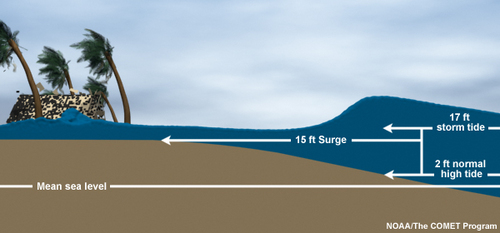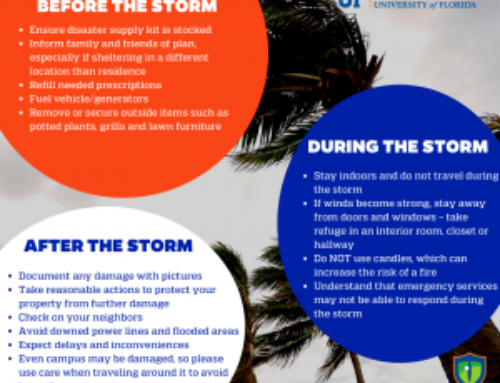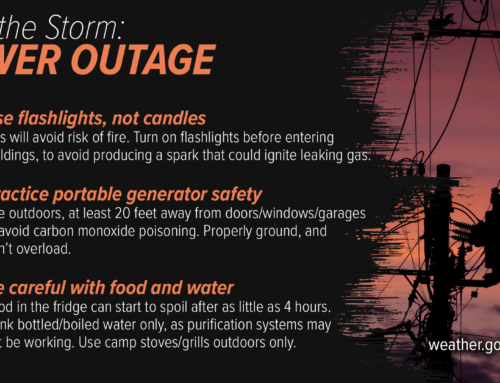Introduction: A storm surge, often referred to as the most destructive and lethal consequence of a hurricane, is a phenomenon that occurs when a hurricane traverses a substantial body of water. This occurrence is driven by the hurricane’s forceful winds that propel water with such velocity that it accumulates and forms a mound higher than the normal sea level. As the hurricane approaches land, this surge of water can inundate coastal areas and extend well into inland regions, causing catastrophic damage. This article delves into the mechanics of storm surges, their dangers, the impact they can have, and the importance of heeding evacuation orders in vulnerable regions.

The Mechanics of Storm Surges: A storm surge is essentially a massive mound of water generated as a result of a hurricane’s movement across the ocean. The wind from the hurricane forcefully propels water, causing it to accumulate and create a mound higher than the usual sea level. This phenomenon is intensified as the hurricane approaches the coastline. The surging water is often accompanied by powerful, crashing waves, which combine to create an overwhelming force that can wreak havoc on coastal areas.
The Dangers of Storm Surges: The danger posed by storm surges cannot be overstated. These surges have the potential to inundate entire coastal regions, causing widespread destruction and loss of life. The ferocity of a powerful hurricane can lead to a storm surge reaching heights of 15 feet or even more. In the most extreme cases, surges of 20, 30, or even 40 feet have been witnessed. Many coastal cities and resort areas are situated at elevations of less than 10 feet above sea level, making them highly vulnerable to the devastating impact of storm surges.
Impact on Coastal Areas: The impact of storm surges can be catastrophic. Buildings can be toppled, ships and docks can be carried inland, and transportation infrastructure like train tracks can be upended. Even a relatively shallow surge—less than two feet—can render vehicles submerged and roads impassable. Walking through the swiftly moving water is extremely challenging and dangerous. The cold water, coupled with the wind chill, can lead to hypothermia in a matter of minutes. Those who are unable to reach higher ground quickly, such as second stories of buildings, are at risk of losing their lives due to the sudden and widespread inundation.
Evacuation Imperative: Given the rapid and forceful nature of storm surges, timely evacuation is paramount for individuals residing in vulnerable areas. Waiting for the water to arrive can make escape nearly impossible, as surges cover broad areas in an instant. Those who ignore evacuation orders are at significant risk. A person stranded on the second floor of a building might have a better chance of survival, but it’s still a precarious situation. Attempting to navigate the open terrain when the surge hits is perilous, as downed trees, wires, and waterlogged engines can thwart escape efforts. Promptly obeying evacuation orders is the best course of action to ensure safety.
Forecasting Challenges: Predicting the characteristics of a storm surge is a complex endeavor due to numerous variables. Variables like the timing of the surge’s arrival, tide levels, wind speeds at landfall, rainfall contribution, landfall location, and topography all contribute to the difficulty of accurate forecasting. The uncertainty of these factors underscores the importance of heeding evacuation orders when issued.
Storm Tide vs. Storm Surge: It’s crucial to differentiate between storm tide and storm surge. While a storm surge is the water level rise caused by the hurricane’s winds, a storm tide is the combination of this surge and the astronomical tide. This dual effect can lead to severe flooding, especially if the surge coincides with a high tide.
Conclusion: Storm surges remain one of the most hazardous aspects of hurricanes. Their potential for destruction and loss of life is immense, making preparedness and timely evacuation imperative for those residing in vulnerable coastal areas. As hurricanes are inherently unpredictable, it’s vital to prioritize safety by heeding evacuation orders and seeking higher ground to avoid the deadly impact of storm surges. For more information and resources on hurricanes and safety measures, the National Oceanic and Atmospheric Administration (NOAA) and the National Weather Service offer valuable insights and guidance.








